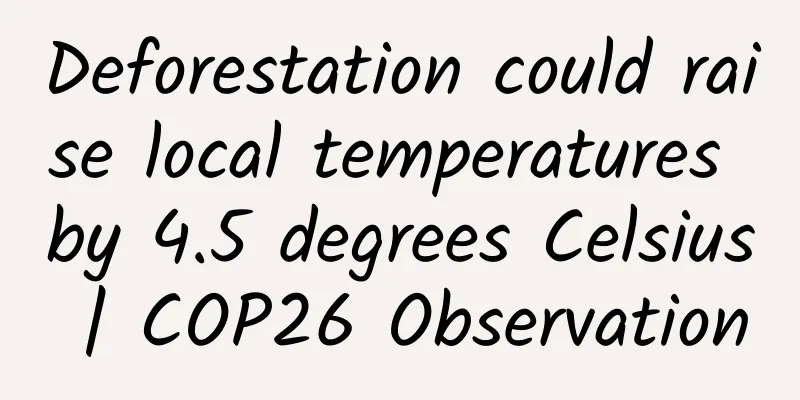There is a "microbial city" in our mouth

|
The invention of the microscope first expanded people's vision from the macroscopic world to the microscopic world, allowing people at that time to truly see microorganisms. With the advancement of science and technology, people's understanding of microorganisms has become more and more in-depth. Scientists have discovered that there are a large number of microorganisms living in the human body. Our human body is like a rich "country" for microorganisms, and the oral cavity is one of the "first-tier cities" with "rich resources". There are about thousands of microorganisms in the human oral cavity. These little guys not only "live" in the oral cavity, but most of them also have a "serious job" to make their own contributions to maintaining the stability of the oral cavity. I am a little excited to think that I can provide homes and jobs for so many little guys with my own efforts! The "residents" in the mouth include bacteria, fungi, spirochetes, etc. Bacteria are the main "residents" of this "city". Among them, Actinobacteria, Bacteroidetes, Firmicutes, Fusobacteria, Proteobacteria, and Spirochaetes constitute the main groups in the mouth. The "door" here is different from the door in our room. It is one of the taxonomic levels and includes a large class of closely related microorganisms. And these bacteria are not evenly distributed in the oral cavity. For bacteria, the oral cavity has a variety of different habitats, such as oral mucosa, gums, teeth, tongue, etc. These different environments are like the various "communities" that make up a "city", and the composition of "residents" in different "communities" is also different. For example, about 90% of the bacteria in the oral mucosa are from Firmicutes and Proteobacteria, and on teeth, in addition to Firmicutes and Proteobacteria, Fusobacteria and Bacteroidetes also account for a considerable proportion. Schematic diagram of microbial composition in different environments (Image source: self-made by the author) Although food residues in the mouth can provide rich nutrients for bacteria, oral microorganisms still face some challenges to survive in this "city". For example, we need a lot of drinking water every day, and saliva is always flowing. A drop of water that is insignificant to us is like a sea from the perspective of microorganisms! In such a flood, how do oral bacteria ensure that they are not washed away? In order to adapt to this environment, bacteria have also evolved specific survival strategies. Take teeth as an example. Food residues and other nutrients on the surface of teeth or in the gaps between teeth will attract a group of bacteria to live there. After they successfully "settle down", they will secrete some substances (such as polysaccharides, proteins, etc.), just like the bacteria "build a house" together. This "house" can "shelter" the bacteria from wind and rain. We call this whole "house" and the bacteria in the "house" a biofilm. Schematic diagram of the biofilm formation process (Photo source: biorender) Through research, it was found that bacteria formed biofilms of different appearances in different environments. Scientists used unique fluorescent labeling methods (i.e. fluorescent probes) to mark different microorganisms. This process is like "putting on" "fluorescent hats" of various colors for different bacteria. After irradiation with special fluorescent light, you can see the beautiful picture constructed by microorganisms in the mouth. A cauliflower structure in dental plaque. Different colors represent different microorganisms. (Image source: Jessica L. Mark Welch et.al, 2015) Biofilm provides a "housing place" for bacteria, allowing them to "live" and "work" better. For example, some Lactobacilli are the "famous" "good residents" in the "city". They can help us fight against the pathogens of periodontal disease. However, some harmful bacteria are difficult to remove due to the presence of biofilm, which affects oral health. If the "bad guys" in the "city" (such as Streptococcus mutans) are allowed to form dental plaque, and the dental plaque is not cleaned in time, it may cause caries, which is commonly known as "cavities". If the dental plaque is close to the gums, it may cause gingivitis and even periodontitis. The hedgehog structure of dental plaque. Different colors represent different microorganisms. (Image source: Jessica L. Mark Welch et.al, 2015) So how can we remove dental plaque as much as possible? In fact, it is very simple. Just develop a good habit of brushing your teeth every morning and evening. Brushing your teeth can not only remove dental plaque, but also remove soft scale and food residues. It plays a key role in maintaining oral hygiene and maintaining the health of teeth and periodontal tissues. In addition, use dental floss to clean the gaps between teeth after brushing your teeth, so that the dental plaque in the gaps will have nowhere to hide. Brushing your teeth cannot solve all oral problems. If dental calculus has formed, you can go to the hospital for a teeth cleaning to remove the hard-to-remove dental plaque, dental calculus and some discoloration on the surface of the teeth. Let your mouth be healthy again and your teeth be white again. People often say that "food is the first necessity of the people" and "people are iron, rice is steel"... Eating is really an indispensable part of our lives and is also the "heart and soul" of many people! Having a healthy oral cavity is the prerequisite for enjoying delicious food, so we should pay more attention to oral health. Only by brushing your teeth carefully now can you enjoy delicious food in the future! References: [1] Xu X, He J, Xue J, et al. Oral cavity contains distinct niches with dynamic microbial communities. Environ Microbiol. 2015;17(3):699-710. [2] Radaic A, Kapila YL. The oralome and its dysbiosis: New insights into oral microbiome-host interactions. Comput Struct Biotechnol J. 2021;19:1335-1360. [3] Mark Welch JL, Rossetti BJ, Rieken CW, Dewhirst FE, Borisy GG. Biogeography of a human oral microbiome at the micron scale. Proc Natl Acad Sci US A. 2016;113(6):E791-E800. Image: Self-made image elements from https:// biorender.com/ (Note: Latin parts in the text should be italicized) Produced by: Science Popularization China Produced by: Liu Yuxuan and Lin Yongqing (Institute of Microbiology, Chinese Academy of Sciences) Producer: China Science Expo |
<<: Be careful! If you build a house here, it will "run away" by itself
Recommend
How to choose vinegar? Is vinegar really nutritious?
I have talked with friends before about how to ch...
How was China's grain base built?
Do we need to stockpile food? Do we really not ha...
Is it good to take Panax notoginseng powder during menstruation?
Panax notoginseng powder is a medicine that promo...
Stuffy nose? Your understanding of nasal congestion may be wrong...
Leviathan Press: I guess many people who have bee...
The efficacy and function of daylily seedlings
The environment is now seriously deteriorating an...
The efficacy and function of celery
Celery is a very common Chinese medicine and also...
What are the uses of Schisandra chinensis
Nowadays, many people have seen Chinese medicine,...
Brain death may not be true death? The blurring boundary of death
Author: Global Science Mechanisms for coping with...
Flying centipede grass for treating snake bites
Flying centipede, also known as flying centipede ...
How to make dodder soaked in water
Cuscuta australis is a common Chinese herbal medi...
600 million people are myopic, half of them are teenagers! Catch the "early warning signs" before children become myopic
There are about 600 million people with myopia in...
The efficacy and function of white horse mane bell flower
With the development of society and the close int...
Harmful substances appear! Many people in Japan have excessive levels of organic fluorine compounds!
Audit expert: Gan Qiang Lecturer at Beijing Insti...
What are the effects of the beetle?
The earthworm is a kind of insect that we often f...









